11th September 2025
I woke that morning up in the City Campground and was impressed of the Light.
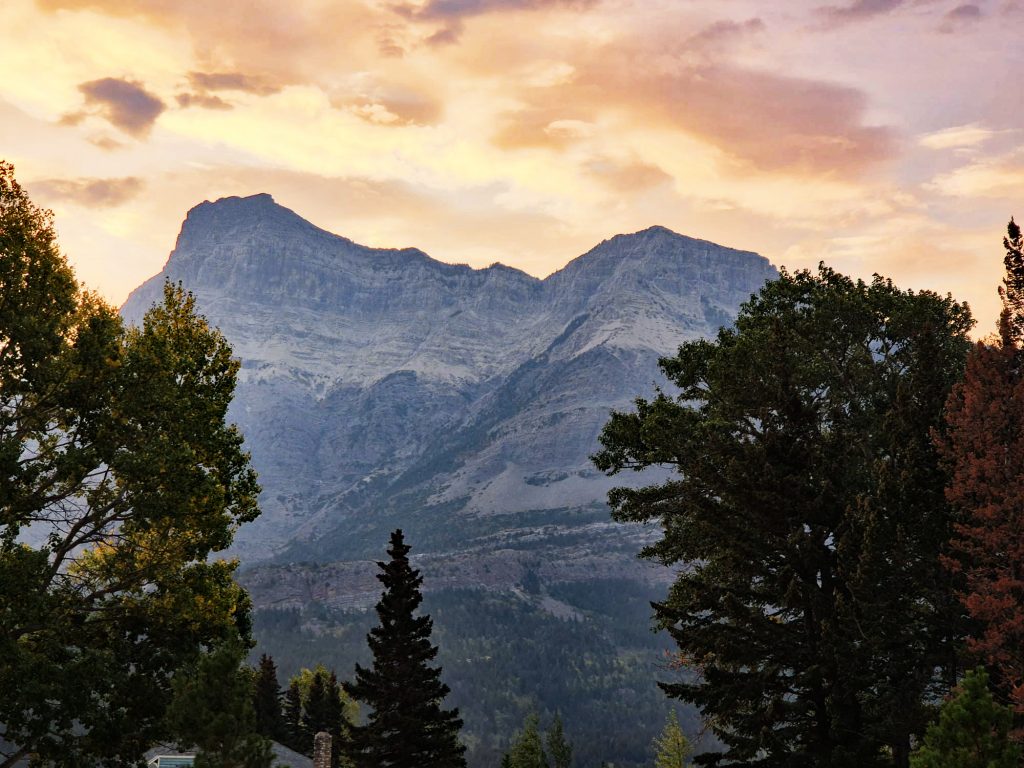
As I started, the clouds have been low, with the burnt skeletons of trees from past wildfires still stark against the pale light. The trailhead rustled: dry needles and talus. The air was crisp. I set out along the shore of Waterton Lake, the path mostly gentle at first, the lake smooth, mirror-like, reflecting pale grey skies and distant mountains slowly waking in dawn light.
Shoreline & Lower Bertha Falls
As I followed the lake shore, the first mountains to the east (on my right, looking across the lake) came into view: Vimy Peak (≈ 2,385 m), with its sharp profile, rising steeply from the water’s edge, a slender ridge cresting, sometimes serrated, its flanks shaded forested, other parts more open, rocky. Its colour was a mixture of cool grey and muted green of trees, with lighter patches where rock was exposed—almost chalky stone, with darker scree near its base. I learned later that Vimy Peak anchors Vimy Ridge, which runs to Arras Peak.
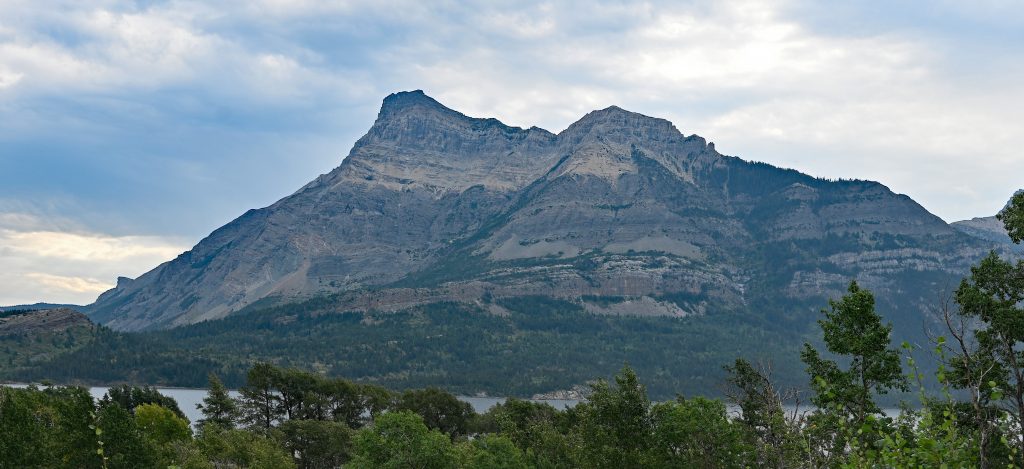
Also across the lake, under softer light, I could see Mount Boswell, more distant, less sharp at the crest, more rounded slopes, tree-covered nearly to the top. And beyond, the gentle outline of prairie blending into sky, almost flat in contrast to the rugged line of Vimy.
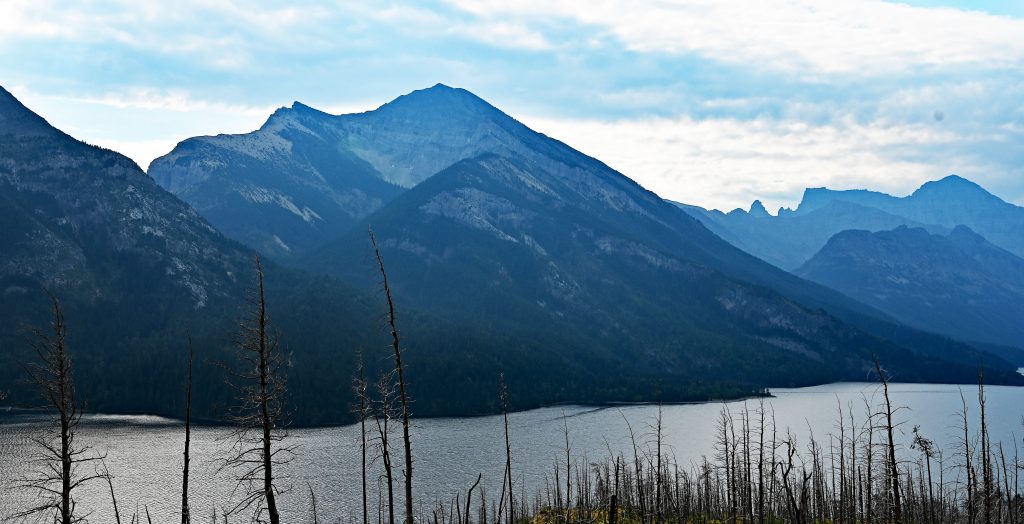
Walking, I passed through burned forest. As the trail curved to follow the shore, patches of new growth sprouted — small conifers, shrubs — so that by the time I reached the point where the hike splits and follows the Bertha stream I was in mostly unburnt greenery: firs, pines, mossy forest floor, understory of berries.
Rising Toward the Falls
At Lower Bertha Falls, the sound of water—roar, splash, grey mist—pulled me up. Through gaps in trees I got glimpses of rock walls above: steep walls of layered sedimentary rock, striated greys and tans, sometimes tinged with rust in places (iron staining perhaps) from water seeping. Colors under shadow were deep slate, above, sunlit ridges were lighter, almost creamy, and where rock faces caught late morning sun, a warm honeyed tone.
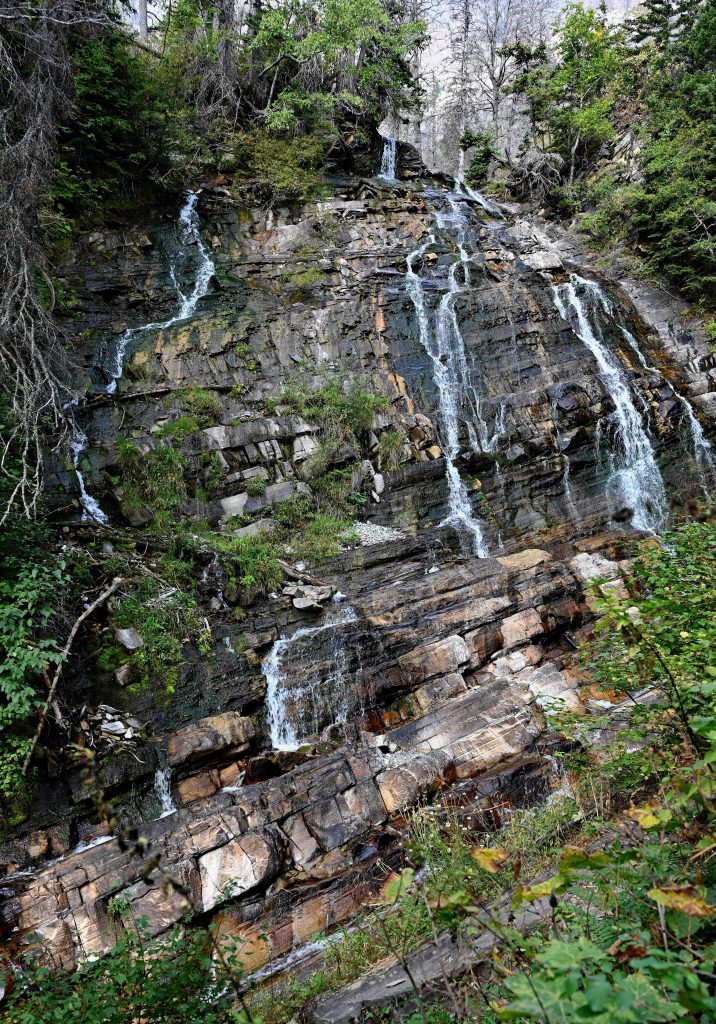
The incline after the lower falls gradually steepened: I began switchbacks, each turn giving a postcard view back down: the lake below, mirror-quiet, the opposite shore-mountains shifting as I climbed.
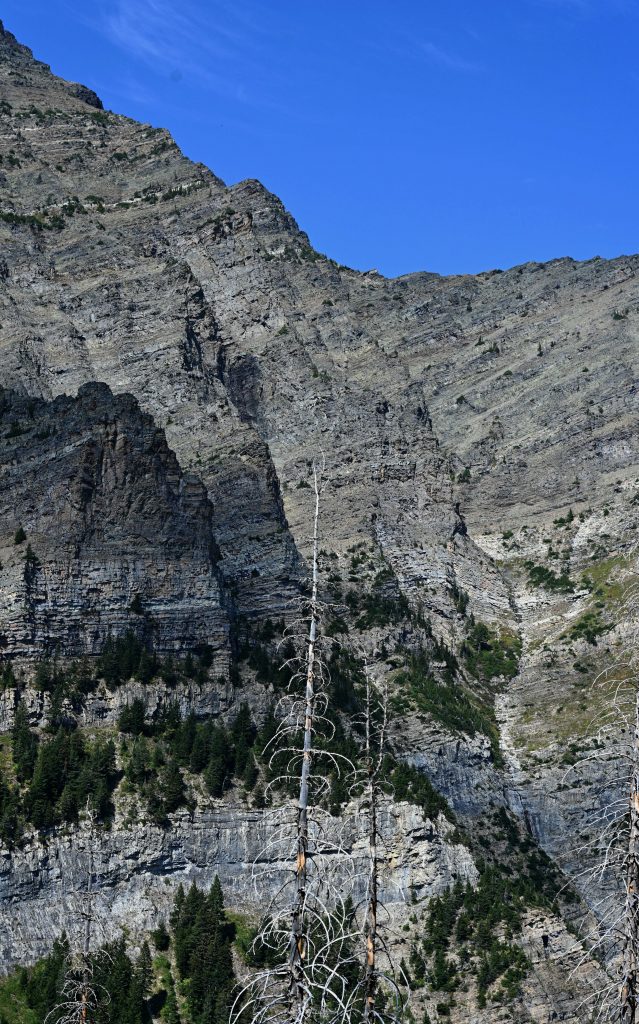
The layers of forest receding, rocky outcrops taking over, the trail rockier, more talus, scree. The upper falls I saw only partially: trees always between me and the full drop, but I caught the cascade’s roar, the white froth, the spray, and glimpsed cliff faces behind them.

Bertha Lake & the Cliffs
At the lake, nestled in an amphitheatre of peaks, I felt a hush — the trail’s end, water still except for small ripples, air cooler, alpine. The lake sat between Bertha Peak (≈ 2,454 m) and Mount Alderson (≈ 2,692 m) to one side, and Mount Richards (≈ 2,377 m) on the other.
Bertha Peak: its flanks steep, sharply rising from Bertha Lake, rocky ridges, with a mix of dark grey sedimentary layers and lighter rocky outcrops.

From where I sat, Alderson Peak seemed its neighbour, sometimes I mistook peaks: Alderson was the higher, broader mass, a weighty presence just west of Bertha Peak—its upper slopes more eroded, gentler in some aspects, with scree fields, a patchwork of green meadows in late summer, patches of snow left in shaded gullies (though at my date those were minimal).
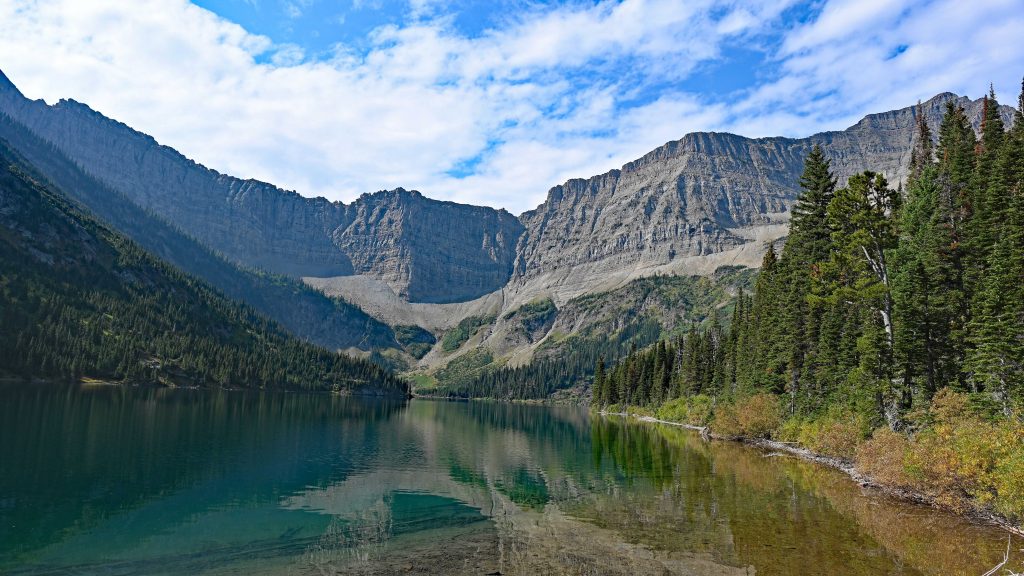
Mount Richards: the massive rocky cliff wall forming one side of the cirque, its face almost vertical in places, especially at the southern end of the lake. From my position at the shore, Richards’ cliffs were imposing: jagged, striated, bands of rock, dark in shade, glowing golden when the sun caught them. The summit narrow, ridgeline sharp in outline.
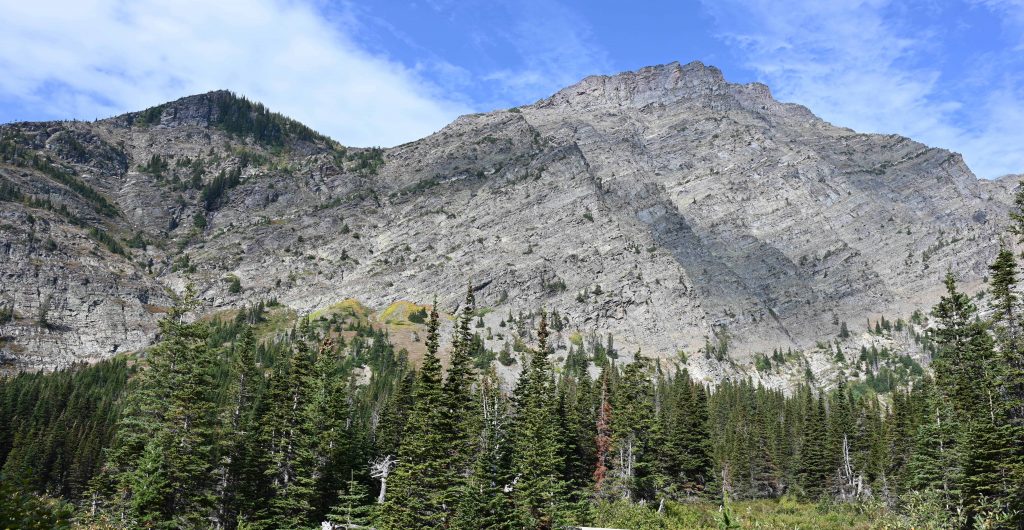
The lake water itself was a jewel: turquoises and deep greens where depth increased, lighter aquamarine near shore with gravel and argillite rock under shallow water. Across, where cliffs dropped to the water or near, reflections were muted by wave-ripples, but in smooth patches clear.
On Descent & Across the Lake
Descending with lighter steps, enthused by views, how nice the Bertha Peak is. From the lake, it looked like that there are three Rock ships that run parallel only each Peak deeper. But the further down I go, I see that it’s just one mountain – Albertha Peak – with lots of wrinkles.
Looking across Middle Waterton Lake (to my left earlier, then in front as I dropped below tree line), I could still see Vimy Peak & Vimy Ridge: crisp against sky, especially their eastern slopes where sunlight struck. The ridgeline of Vimy Ridge stretched, interspersed with forested shoulders, rocky summits, the contrast between open rock and treed slopes clear. The colours softened: blue-grey in shade, pale warm grey in light, patches of autumn foliage low in trees—golds, oranges—though high up the mountains were still above tree line, jagged.
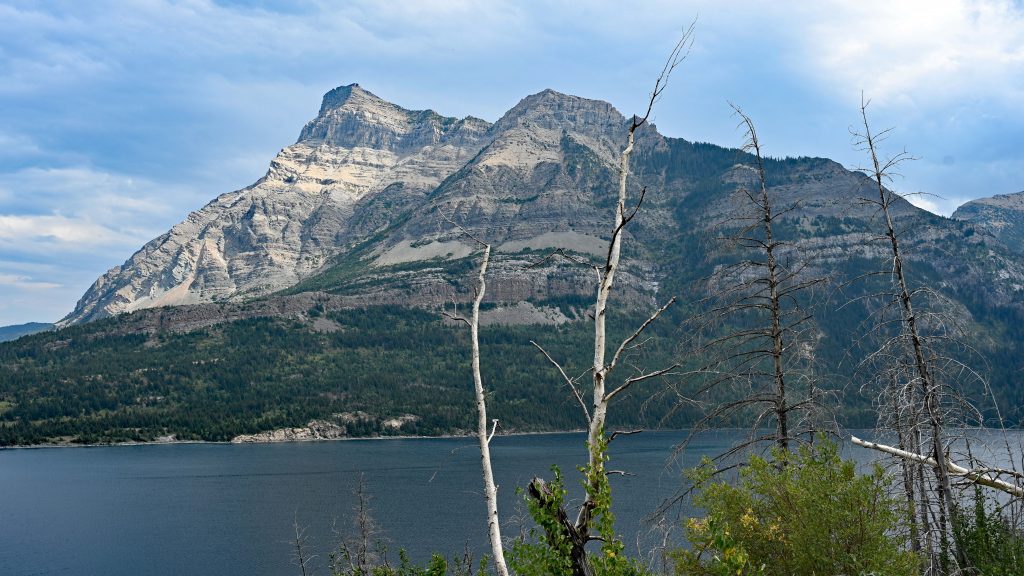
Also, farther, I recognized Mount Crandell, closer to the townsite side, its flank burned in parts from fire, its shape more massive but less sharp than Richards or Bertha. Its slope more gentle in parts, rounded.
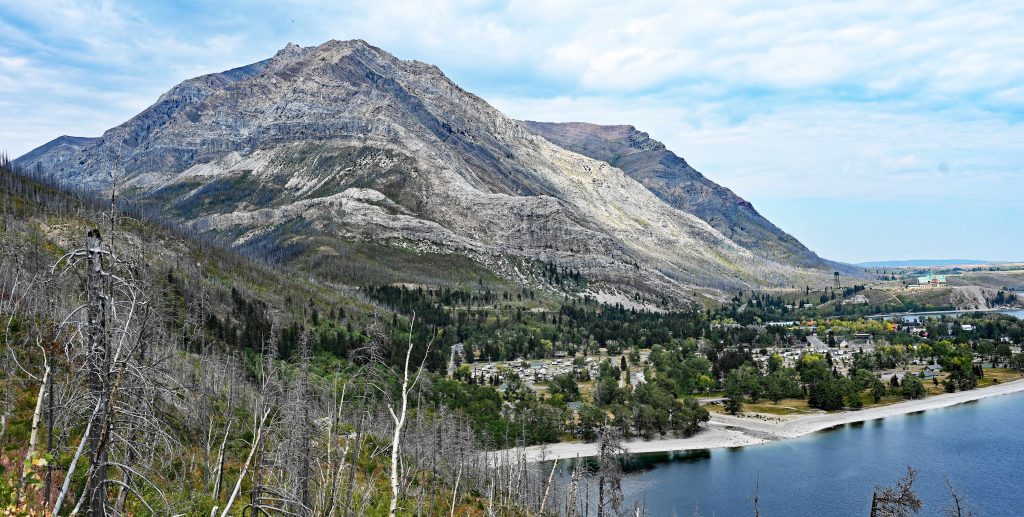
As I looked back along the shore of Waterton Lake, my gaze wandered across the water, past Mount Boswell, whose wooded, gently rounded slopes marked the eastern side of the lake. To the right, at the very back of the south shore where the lake merges into the United States, was Goat Haunt.
There the valley opens like a green gate. Behind the last ripples of water, dark, wooded slopes appear, and above them rise mountains again: the towering cliffs of Citadel Peak, towering like a castle over the valley, and further east, the narrower, jagged ridges that form the border with Montana. Goat Haunt itself seems almost small and inconspicuous from Canada – just a tiny, bright spot on the shore where the ranger station once stood and boats from Waterton docked. But nestled against the backdrop of high cliffs and dense forest, it gives the impression of a remote wilderness that has remained almost untouched by civilization.
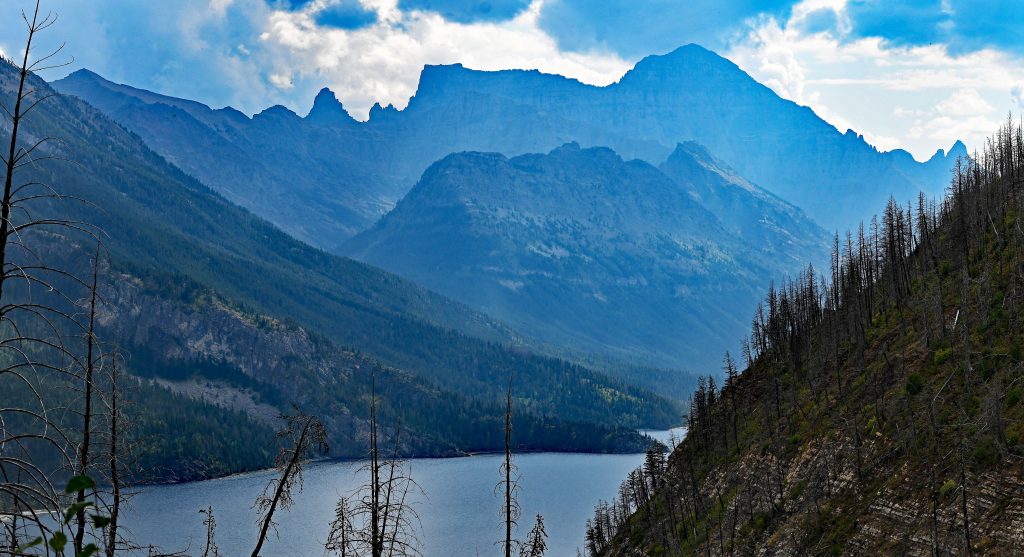
The late afternoon light cast a soft glow over this remote location. The lake seemed even quieter down there, framed by dark forest. To me, Goat Haunt seemed like a promise in the distance – a hint that the waterfront trail goes much further, deep into the rugged valleys of Glacier National Park on the US side.
Atmosphere & Scenery
There was a stillness at the lake I remember, the way the wind softened at that altitude, breaths visible in cool air, reflection in water catching the turning light of afternoon. The forest transition felt like passing through time: from burned, almost lunar, to lush green, alpine wildflowers in hollows, to rocky stone where only lichens cling. The colour palette shifted: greys, charcoals, burnt browns, then deeper greens, then stone whites and light greys with sunlit warmth. The water always vivid—cool blue-greens, under cloud sometimes slate-blue.
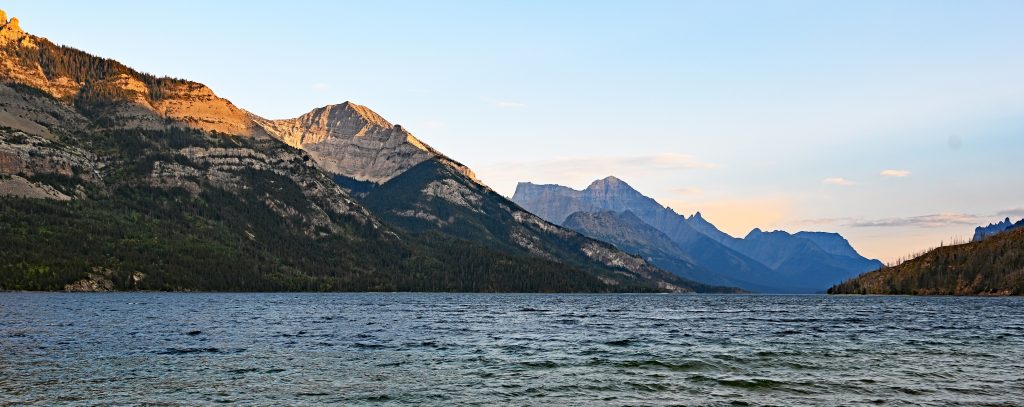
The weight of altitude too: rising steadily, lungs puffing, switchbacks turning. I felt small against those cliff faces. The upper falls were partly hidden, but their presence, the sound, mist, added life. From the lake shore, the peaks felt monumental, ringed around me, protective yet daunting.
